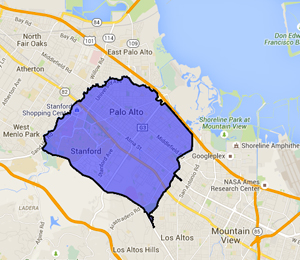Nearly 500 residents of Westhampton Beach will go to the polls tomorrow but they will have to base their decisions on a woeful lack of info on candidates and their stands.
None of the four candidates—incumbents Patricia DiBenedetto and Hank Tucker and challengers Rob Rubio and Brian Tymann—allow themselves to be questioned in public by citizens and the press.
Tucker, who has been a trustee eight years, will be eligible for lifetime medical benefits without making contributions if elected since he will meet the ten-year requirement for such a plan.
WHB officials, including Mayor Marie Moore and the two other trustees, Ralph Urban and Charles Palmer, do not allow in-person questioning by this reporter.
 Rubio and Tymann, in emails to us, have stated their position that WHB should not cave to demands by the East End Eruv Assn. and Verizon to promise categorically and perpetually never to oppose an eruv Jewish religious boundary in WHB.
Rubio and Tymann, in emails to us, have stated their position that WHB should not cave to demands by the East End Eruv Assn. and Verizon to promise categorically and perpetually never to oppose an eruv Jewish religious boundary in WHB.
The demands are in the 6,000-word transcript of a conference Feb. 24 with Judge Kathleen Tomlinson.
DiBenedetto and Tucker do not respond to emails from this reporter on this issue.
Patch.com the local web news service, has posted yesterday's O'Dwyer blog describing election issues on its site. This will give the voters important background on the issues as well as the news that Rubio and Tymann oppose use of utility poles on WHB property as sought by the EEEA and Verizon.
Moore has rejected attempts by this reporter to meet with her or talk to her on the phone for months. Emails are ignored. We went to her office June 15 and asked to see her but she refused to do so. We left 200 pages on the eruv dispute, including the 6,000-word transcript, with secretary Rosey Towers.
Judge Tomlinson Transcript Is Key
The transcript should be linked on the WHB website under "Eruv Litigation" where the last entry is dated Dec. 22, 2014.
Next stop was police h.q. next door where we asked to see Chief Trevor Gonce. Attempts to reach him by phone or email have gone nowhere for months. WHB staffers say he will not talk to us until we present "credentials" but no one will say what those credentials are. Gonce was present but would not come out.
A third stop was to the WHB library, built several years ago for $7.5 million and which has a $2.5M annual budget. Attempts for months to meet with director Danielle Waskiewicz have been rebuffed. She had a son recently and is not due back in the office until late July. Business manager "Laura" (last name not available) was present June 15 but would not see us.
We left a copy of the 200 pages with Jay Janoski, library reference head. A copy of O'Dwyer's Directory of PR Firms and several copies of O'Dwyer's magazine were left on a previous visit.
The materials were accepted by Janoski but we have no hope they will be given any display by the library. The library board had previously rejected our proposal that the 200 pages be an exhibit in the library and that the library promote a public discussion of the eruv issue.
The American Library Assn. is encouraging libraries to host public discussion of controversial topics, sensing that the web has co-opted many of the research services of libraries.
NYT Skips Coverage of Eruv, Schneier
 The New York Times, whose publisher Arthur Sulzberger said numerous times at Hunter College on June 15 that the paper covers news without fear or favor, has yet to write about the election battle in WHB or the ousting of Hampton Synagogue Rabbi Marc Schreier from the Rabbinical Council of America.
The New York Times, whose publisher Arthur Sulzberger said numerous times at Hunter College on June 15 that the paper covers news without fear or favor, has yet to write about the election battle in WHB or the ousting of Hampton Synagogue Rabbi Marc Schreier from the Rabbinical Council of America.
The Jewish Telegraphic Agency carried a 1,223-word story on the ousting on June 15.
NYT last covered the dispute over eruvim in the Hamptons, which has raged since 2008, on Feb. 4, 2013. Rabbi Schneier had initiated the proposal to have an eruv in WHB in 2008 but withdrew it after opposition by the community. The EEEA then took up the quest, with Weil, Gotshal & Manges providing pro-bono legal work.
Prof. Charlotte Fonrobert of Stanford University, who specializes in Judaism, Talmudic literature and culture, said in a paper Jan. 30, 2015 that depiction of eruvim on websites of Synagogues cancels claims that they are "barely visible" and "unobtrusive." Such claims are frequently repeated in legal decisions involving eruvim.
Typical presentation of an eruv on a Synagogue website is the one for Palo Alto (pictured).


 Husch Blackwell Strategies has added FleishmanHillard alum Michael Slatin as a principal in its public affairs group.
Husch Blackwell Strategies has added FleishmanHillard alum Michael Slatin as a principal in its public affairs group. Rory Cooper, a veteran Republican operative and policy specialist, has joined Teneo’s Washington office as senior managing director in its strategy & communications practice.
Rory Cooper, a veteran Republican operative and policy specialist, has joined Teneo’s Washington office as senior managing director in its strategy & communications practice. Brian Fallon, who served as national press secretary for Hillary Clinton’s 2016 presidential run, is signing on next month as Vice President’s Kamala Harris’ campaign communications director.
Brian Fallon, who served as national press secretary for Hillary Clinton’s 2016 presidential run, is signing on next month as Vice President’s Kamala Harris’ campaign communications director. TikTok is nothing more than a Chinese propaganda tool that poses “a grave threat to America’s national security and, in particular, impressionable children and young adults,” say two Congressmen who want the platform registered as a foreign agent.
TikTok is nothing more than a Chinese propaganda tool that poses “a grave threat to America’s national security and, in particular, impressionable children and young adults,” say two Congressmen who want the platform registered as a foreign agent. Public Strategies Washington has added Abbie Sorrendino, a former aide to now Senate Majority Leader Chuck Schumer.
Public Strategies Washington has added Abbie Sorrendino, a former aide to now Senate Majority Leader Chuck Schumer.


 Have a comment? Send it to
Have a comment? Send it to 
No comments have been submitted for this story yet.